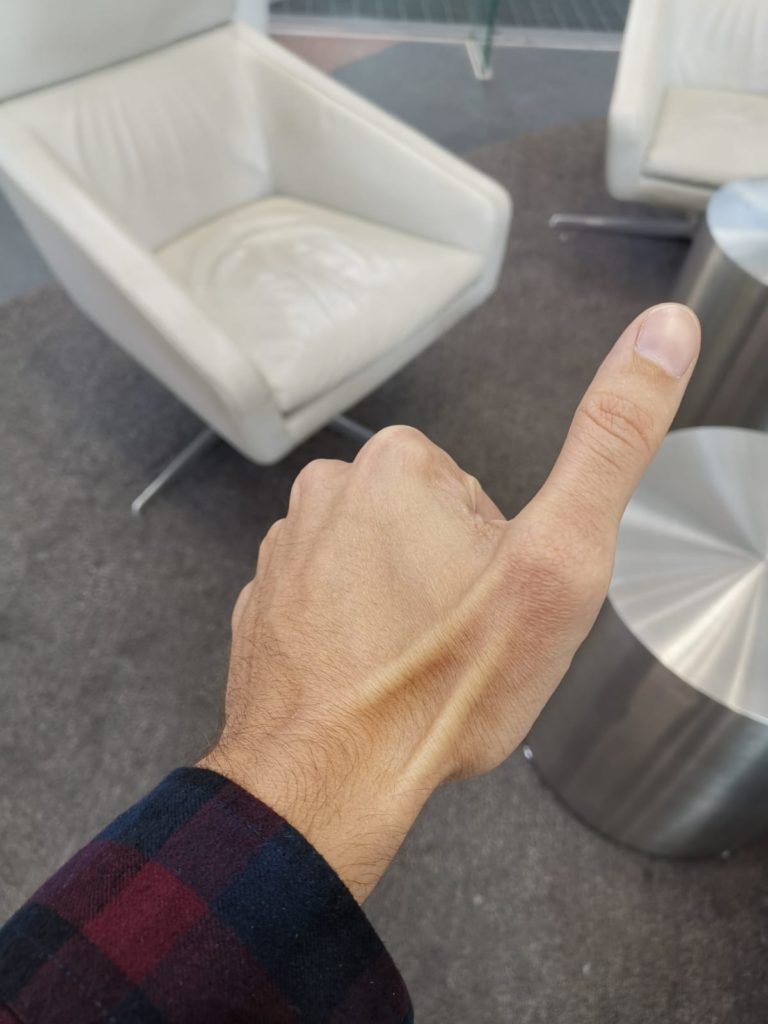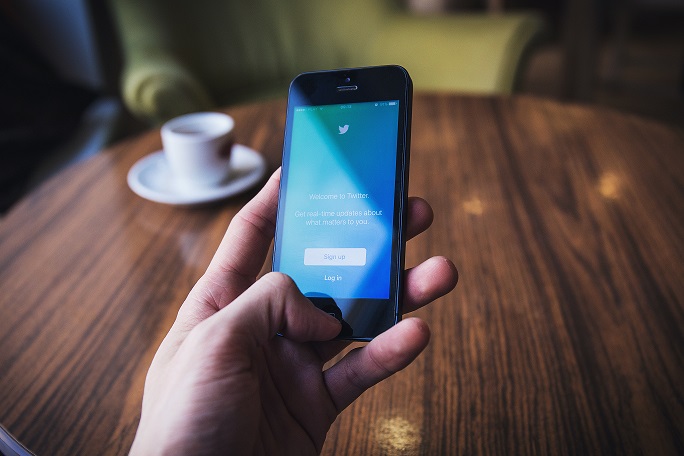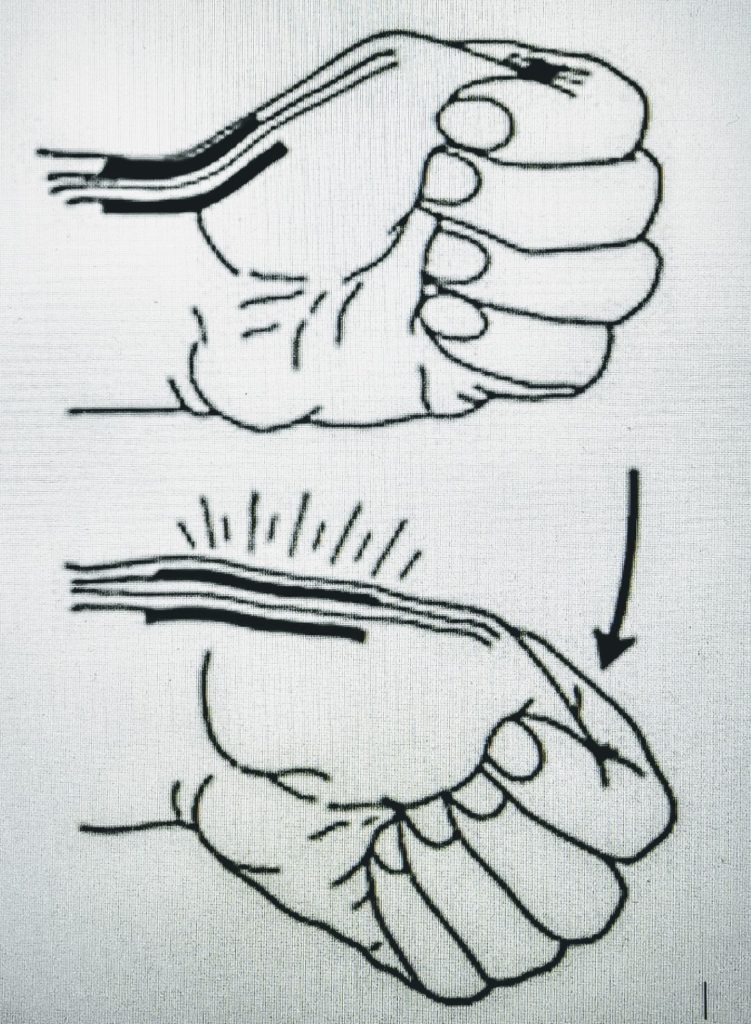De Quervain’s Tenosynovitis
What is de Quervain’s Tenosynovitis?
De Quervain’s tenosynovitis affects two thumb tendons called the abductor pollicis longus (APL) and the extensor pollicis brevis (EPB). It is a very common condition that we often treat in physiotherapy.
On their way to the thumb, the APL and EPB tendons travel side by side along the inside edge of the wrist. They pass through a tunnel near the end of the radius bone of the forearm. The tunnel helps hold the tendons in place, like the guide on a fishing pole.

This tunnel is lined with a slippery coating called tenosynovium. The tenosynovium allows the two tendons to glide easily back and forth as they move the thumb. Inflammation of the tenosynovium and tendon is called tenosynovitis.
You can easily see the tendons affected by de Quervain’s when you do a thumbs-up sign with your hand. These tendons help to lift the thumb up and out. They’re held down onto the bone at the level of the wrist by a strong pulley, or sheath. The pain of de Quervain’s is due to a thickening of the sheath, which causes a tightening over or compression of the tendons, and sometimes swelling in the area. This makes movement of the tendon painful.
Symptoms of de Quervain’s Tenosynovitis
De Quervain’s is pain on the thumb side of the wrist, about where a watch would rest. It is associated with movement of the wrist or thumb. You can also notice pain in positions where your wrist is bent forward and towards the little finger side of your hand. Side-to-side movement of the wrist is another common movement that will cause symptoms. The pain will be even worse if you are holding something heavy or doing something requiring force.
Causes of de Quervain’s Tenosynovitis

- repeated hand and thumb motions such as grasping, pinching, squeezing, or wringing may lead to the inflammation of tenosynovitis. This inflammation can lead to swelling, which restricts the smooth gliding action of the tendons within the tunnel.
- arthritic diseases that affect the whole body, such as rheumatoid arthritis, can also cause tenosynovitis in the thumb.
- scar issue from an injury can make it difficult for the tendons to slide easily through the tunnel.
- in many cases, the pain presents after no direct mechanism or unaccustomed activity.

Quite commonly we see this condition in new mothers; lifting up a baby all day long. De Quervain’s is also common in work that requires strong or repetitive thumb and wrist movements like a tradesman. It can also be as the result of direct trauma such as falling on your wrist or thumb, a sudden twisting force in the area or a direct blow to the side of the wrist. However, in 2019, with all of our lovely technological advances, one of the biggest contributors I saw in practice was the onset of thumb pain with excessive phone use.
How is it diagnosed?

The diagnosis of de Quervain’s tenosynovitis is quite easy. Most of the time no fancy tests are required.
The Finklestein test is one of the best ways to make the diagnosis. You can do this test yourself. Bend your thumb into the palm and grasp the thumb with your fingers making a fist with the thumb inside. Now bend your wrist away from your thumb in a side to side motion. If you feel pain over the tendons to the thumb, your problem is probably de Quervain’s tenosynovitis.
Treatment options ???????
Your healthcare practitioner is the best person to individually advise you how to treat your de Quervain’s tenosynovitis. We cover this in our next blog on treatment of de Quervain’s. Stay tuned! However if this is already sounding a lot like symptoms that you have been experiencing, please don’t wait. Let our team help you today and contact us.


Sorry, comments are closed for this post.